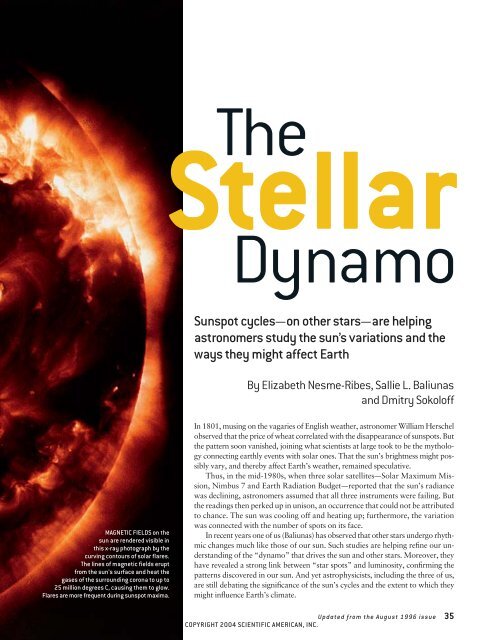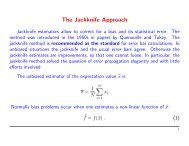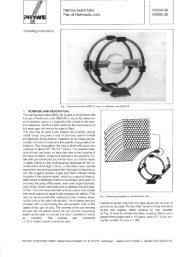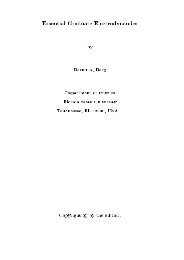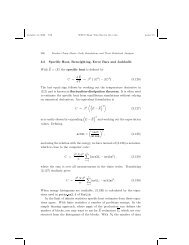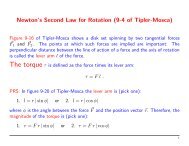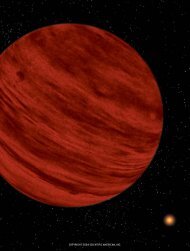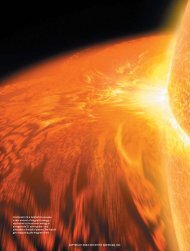The Stellar Dynamo - Scientific American Digital
The Stellar Dynamo - Scientific American Digital
The Stellar Dynamo - Scientific American Digital
- No tags were found...
You also want an ePaper? Increase the reach of your titles
YUMPU automatically turns print PDFs into web optimized ePapers that Google loves.
<strong>The</strong><br />
<strong>Stellar</strong><br />
<strong>Dynamo</strong><br />
Sunspot cycles—on other stars—are helping<br />
astronomers study the sun’s variations and the<br />
ways they might affect Earth<br />
By Elizabeth Nesme-Ribes, Sallie L. Baliunas<br />
and Dmitry Sokoloff<br />
MAGNETIC FIELDS on the<br />
sun are rendered visible in<br />
this x-ray photograph by the<br />
curving contours of solar flares.<br />
<strong>The</strong> lines of magnetic fields erupt<br />
from the sun’s surface and heat the<br />
gases of the surrounding corona to up to<br />
25 million degrees C, causing them to glow.<br />
Flares are more frequent during sunspot maxima.<br />
In 1801, musing on the vagaries of English weather, astronomer William Herschel<br />
observed that the price of wheat correlated with the disappearance of sunspots. But<br />
the pattern soon vanished, joining what scientists at large took to be the mythology<br />
connecting earthly events with solar ones. That the sun’s brightness might possibly<br />
vary, and thereby affect Earth’s weather, remained speculative.<br />
Thus, in the mid-1980s, when three solar satellites—Solar Maximum Mission,<br />
Nimbus 7 and Earth Radiation Budget—reported that the sun’s radiance<br />
was declining, astronomers assumed that all three instruments were failing. But<br />
the readings then perked up in unison, an occurrence that could not be attributed<br />
to chance. <strong>The</strong> sun was cooling off and heating up; furthermore, the variation<br />
was connected with the number of spots on its face.<br />
In recent years one of us (Baliunas) has observed that other stars undergo rhythmic<br />
changes much like those of our sun. Such studies are helping refine our understanding<br />
of the “dynamo” that drives the sun and other stars. Moreover, they<br />
have revealed a strong link between “star spots” and luminosity, confirming the<br />
patterns discovered in our sun. And yet astrophysicists, including the three of us,<br />
are still debating the significance of the sun’s cycles and the extent to which they<br />
might influence Earth’s climate.<br />
Updated from the August 1996 issue 35<br />
COPYRIGHT 2004 SCIENTIFIC AMERICAN, INC.


